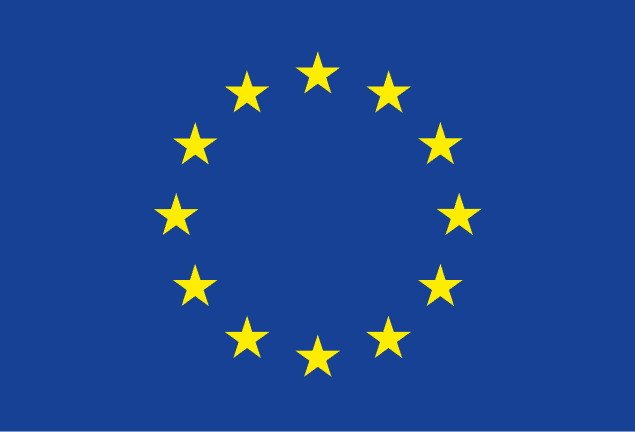Headless commerce - what is this craziness all about? Headless commerce is software that allows you to display content from your online shop on any device and truly enter the omnichannel. How is this possible? How does the headless commerce platform actually work? And isn't it just another trendy word with little meaning behind it? We can answer the last question straight away: A headless commerce solution is a powerful tool that will free you from the constraints of the devices you appear on. As for the other questions, we answer them further on.
From this article you will learn:
- What is Headless for e-commerce?
- Why is it worth investing in?
- Who has already decided to implement it?
What is headless commerce?
Headless commerce is an emerging technology that allows businesses to create and manage their online store without the need for a traditional web interface. Instead, headless commerce makes use of APIs and other technologies to power the backend operations.
This provides businesses with more flexibility when it comes to designing their customer experience, as they can customize the content and visuals on their website without having to worry about compatibility issues with the underlying platform.
Additionally, headless commerce enables businesses to create a consistent shopping experience across multiple devices, such as smartphones and tablets, so customers have access to the same products and services regardless of which device they are using. Finally, a headless commerce system offers enhanced scalability, allowing businesses to quickly expand into new markets or add new features in response to customer demand. Headless e-commerce solutions can also be incredibly cost-effective, as they require fewer resources to develop and maintain.
Traditional online shop vs shop based on Headless
Let's take a step back and remind ourselves what a typical online shop consists of:
- The database, holds all the product information, names, prices, descriptions, photos, instructions, specifications, etc.
- The backend, is the part that retrieves and processes data from the database.
- Frontend, the part that allows us to see the effects of the backend, and the messages for the end user, is graphically designed and friendly. In simplest terms: what we see.
How then does traditional e-commerce differ from that using Headless e-commerce? In short, in a traditional store, the three elements: database, backend, and frontend, are fused. In headless e-commerce, the frontend, i.e. the data presentation layer, is separated from the other ones, and only communicated with them via an API.
The API here is the link that transfers the data from the database and backend to the frontend. Thanks to the fact that the backend and frontend aren't permanently connected, it doesn't matter on which device the content is displayed (or even read out with text-to-speech!). This means that an action using the API frees you from the constraints of the end devices on which you publish.
Let's provide an example: when you press the ‘Buy Now’ button on your smartphone, the presentation layer (the frontend) sends a message via an API to the app (the backend), telling it that it's time to process the order. The backend retrieves information from the database about the price of the product, shipping time, etc. It then uses the API to send the information to the frontend to show you a summary of your order. If you choose external payment, e.g. by a bank or payment services such as przelewy24.pl, another API will redirect you to the payment. And all this in a split second.
Conventional monolithic e-commerce systems are easy to initiate. They furnish merchants with all the necessary tools to generate a shop, receive payments, and carry out transactions.
However, high-growth retailers may find that traditional e-commerce websites begin to reduce design capabilities and limit how they interact with shoppers.
From a design standpoint, it can be difficult to create websites that are truly visually striking. Incorporating distinct customizations, images, and interactive components can be tough to implement within traditional e-commerce platforms.
Retail brands usually find they quickly outgrow the available templates and want to build a more unique storefront e-commerce experience.
In traditional commerce platforms, the front end and back end are interdependent. This means the shopping cart, CMS, checkout, subscriptions, and site layout are connected—a change to one section of a store requires changes elsewhere. This makes website updates time-consuming and often expensive. There’s also usually downtime involved, causing possible revenue loss.
On monolithic platforms, it can be harder to make design changes, especially for highly customized experiences. There’s also the risk of slower page load times due to API calls and technical limitations on the platform.
Why use Headless for e-commerce?
Moving from a traditional CMS to a Headless is a challenge, especially in e-commerce. So, why should you invest funds, team time, and other resources of your business in such a process? A headless commerce system offers many benefits to businesses. For example, because it decouples the front-end user interface from the back-end services, businesses can develop their own unique web interfaces without worrying about having to customize or maintain backend services. It also provides greater security for businesses than a traditional commerce solution, as all data is kept securely stored in the back end and only accessible through secure APIs. Let's focus on a few important benefits of headless commerce.
- Headless e-commerce is future-proof and ready for the IoT era. Data shows 57% of IT and e-commerce leaders claim that their current platform would be capable of supporting their business for no more than 12 months. By separating the layer of information from the layer of its presentation, it doesn't matter what target device your content appears on. It could be a POS screen in a desktop showroom, it could be a smartwatch screen, or it could be audio in a smart speaker. Headless even makes your business ready for devices that don't yet exist, letting you prepare for the future.
- This is the real key to an omnichannel strategy. This buzzword has been trending in e-commerce for a good few years now. Headless gives you the opportunity to fit into this trend and present your content on different devices. It increases the possibilities of scaling and easy addition of new touchpoints.
- Headless also facilitates integration with applications and external tools. An API allows any platform or system equipped with it to contact each other. For you, it means that you can introduce newer and newer payment and booking systems to your service and continuously raise your customer service standards.
- At the same time, Headless means better security for your website. The separation of the frontend layer from the backend is an additional barrier to accessing user data. Thanks to headless architecture, your business is a lot safer.
- Such a system enables you to speed up your website. You have 0.05 seconds to convince the user that your e-commerce site is what they’re looking for. Site speed really matters and changes user experience – if a potential customer has to wait for your site to load, they'll move on to something else. Skilled made research about it and numbers say for themselves: 79% of customers “dissatisfied” with a site’s performance are less likely to buy from them again. 64% of smartphone users expect a website to load in four seconds or less. 47% of online shoppers expect web pages to load in two seconds or less. Meanwhile, headless allows you to make it load fast (for example, using mechanisms that reload content only when it's needed).
- Support personalization. One of the best ways to increase user engagement nowadays is to provide users with content tailored exclusively to them. If you support Headless with personalization engines, you can create a powerful tool based on segmentation and content that dynamically adapts to a potential customer's interests (some headless CMSs, like Prepr, have built-in personalization tools, but there are also tools like Conscia that allow you to add personalization capabilities to headless sites that didn't originally have it).
- Headless empowers your marketing team by giving them the freedom to experiment and creating space for agile marketing. This is achieved primarily by reducing the time it takes to publish campaigns or new content. For example, Headless can help you test which devices will be the most effective outreach channel, without the need to separately format content for each.
With headless commerce, businesses have more flexibility in developing their website, as they can customize and change their look and feel without having to worry about how it will affect the back-end functionality. Additionally, headless commerce allows for better scalability, as businesses can easily add new features and services without needing to rewrite any code.
Tools for headless commerce
If you want to implement headless commerce architecture, there are some great tools worth mentioning. Some of them are well-known; maybe you just didn't think about them as right for the headless approach.
- Shopware - Shopware 6 is the newest version of Shopware for e-commerce, and it comes with a built-in Headless PWA (Progressive Web Application) technology. This technology allows you to create applications that are designed to be used on multiple devices, while also providing all the features needed for an online store. With Headless PWA, you can create a fully functional web store that can be accessed through any device, and it's scalable, so you can add new features as your business grows. Shopware 6's headless architecture makes it easy to develop applications quickly and efficiently while still providing customers with a great shopping experience. It also allows for quick integration with other services such as payment gateways, email marketing systems, and more. All in all, Shopware 6's headless architecture offers businesses a great solution for creating their own web stores.
- Shopify - Shopify Plus is one of the leading providers in this space, as they provide a powerful platform with a vast array of features and customization options. With their storefront, you can create an interactive shopping experience for your customers, featuring various payment methods, product filtering, search capabilities, and much more. Additionally, Shopify also offers integration with other third-party services such as shipping carriers, so you can ensure that your customers receive their orders quickly and efficiently. Headless e-commerce tools are the ideal choice for businesses who want to take full control of their online store and optimize it for maximum success.
- Vue Storefront - is an open-source, progressive web app (PWA) aiding in headless eCommerce solutions for businesses. With Vue Storefront, businesses can build innovative e-commerce experiences that are tailored perfectly to their customers' needs. It's also a partner of Shopware.
Companies using headless commerce architecture
You already know what Headless can bring to e-commerce and why you should opt for it. Now, find out examples of top brands that have implemented it into their business.
Marketplace
Amazon
The online sales giant allows customers to place orders in a variety of ways. This is made possible through integration with Echo (smart speakers from Amazon) so that purchases can be made using voice commands.
Etsy
Also uses an API-based architecture. This supports multiple devices, and efficiently eliminates server-side performance issues. API-based architecture can be used to improve the scalability, reliability, and performance of applications. It enables developers to quickly develop and deploy applications to multiple devices, while eliminating server-side performance issues. Your headless commerce will benefit from API too.
Direct-to-Consumer Toyota
Toyota has introduced the Headless system to enable the integration of legacy systems (obsolete, yet necessarily still in use) with IoT (Internet of Things) devices. In doing so, it enables the transition from an online experience in the showroom to an offline one.
Nike
Nike wanted a mobile-first approach. Therefore, it decided to combine Node.js BFF (backend for the frontend) with React SPA (Single Page Application created in React). This allowed Nike to take over some of Adidas's customers.
Sony
The manufacturer combined OMS (Order Management System) with marketplaces. It uses IoT and chatbots in both B2B and B2C commerce to create new brand communication experiences.
Summary
If we had to boil Headless commerce down to a few buzzwords, we'd mention future-proofing, freedom from technological constraints, and omnichannel. This holds great promise for you. But before you can take advantage of Headless, you need to migrate your current system to a new one. It’s going to be a challenge, but one achievable in a finite amount of time. We will write about this in a separate article.







